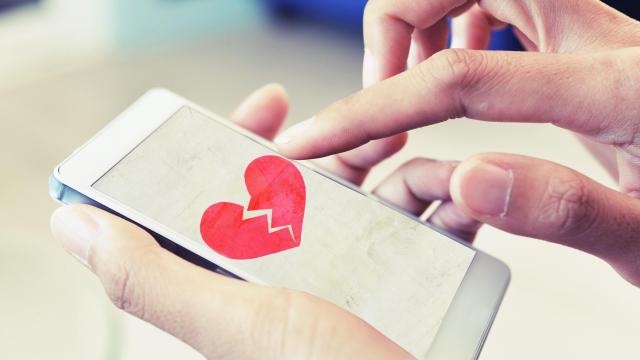Many people can’t stomach the confrontation of a break up, so they might offer the vague promise of continuing the relationship with a series of noncommittal overtures. Basically, they might kind of, sort of, maybe have time for you eventually, but in reality they’re hoping the relationship will slowly whither without having to definitively put the kibosh on things.
This is the art of the slow-fade, and it may be something you’ve experienced. And while ghosting — which sucks — can be vexing for the ghosted, the slow-fade might be even more of a tortuous experience.
What’s the slow fade?
Perhaps you’re trying to get in touch with a fling, or even a platonic friend or acquaintance, but every missive sent their way yields a vague, non-committal reply. Only one party in the couple knows that the relationship is on life support, they’re just not willing to share how they truly feel. The result is confusing for the party being rejected, in large part because they have to decode all the signals and connect the dots, only to discover that they’re being dumped.
Dr. Paulette Sherman, psychologist and author of The Book of Sacred Baths and the host of The Love Psychologist podcast, tells Lifehacker that implicit in the act of slow-fading is a lack of respect for the person being rejected.
On the contrary, she detailed why you should go about breaking up with someone differently, writing:
You can treat them the way you would want to be treated. You don’t have to go into detail but you can say that you don’t think it’s a good match and it isn’t going to work out. This way, they can move on with their lives.
It’s true that both ghosting and slow-fading are difficult to deal with, but at the very least, ghosting makes clear that every text and phone call is being sent into the void. Slow-fading, on the contrary, gives the illusion of hope — but those hopes are always crushed.
Sherman notes that when it comes to the two, ghosting is probably the lesser of two evils. She writes:
They are both painful and confusing for the other person. But given the choice, probably ghosting makes it behaviourally clear that the person is no longer interested and is moving on.
The good news is, if you’re trying to put an end to a casual relationship, your breakup needn’t be such a production. It’s more than OK to convey your feelings in a text or a quick phone call. When it comes to more serious and committed relationships forged over years, then a breakup obviously warrants a face-to-face conversation.
Does slow-fading happen in friendships?
This ritual can apply to platonic relationships as well. It might seem a little more feasible to gradually drift away from a friend, since a friendship doesn’t typically involve the same level of vulnerability and commitment. But it’s possible to rekindle friendships with a little bit of maintenance, rather than resorting to the slow fade when you feel your life diverging from a friend’s.
“If it is a good friend, it may be both uncomfortable and important to air your feelings so they know why your behaviour and loyalty has changed,” Sherman says. “There may be a way to work through this together or to agree to change the level of your relationship and to both understand why.”
Rather than fearing the potential judgement of a friend, it’s best to be up-front, Sherman says. The slow-fade is never really a kind or empathetic way to sever ties with a romantic partner, and friendships are no different.

Leave a Reply
You must be logged in to post a comment.